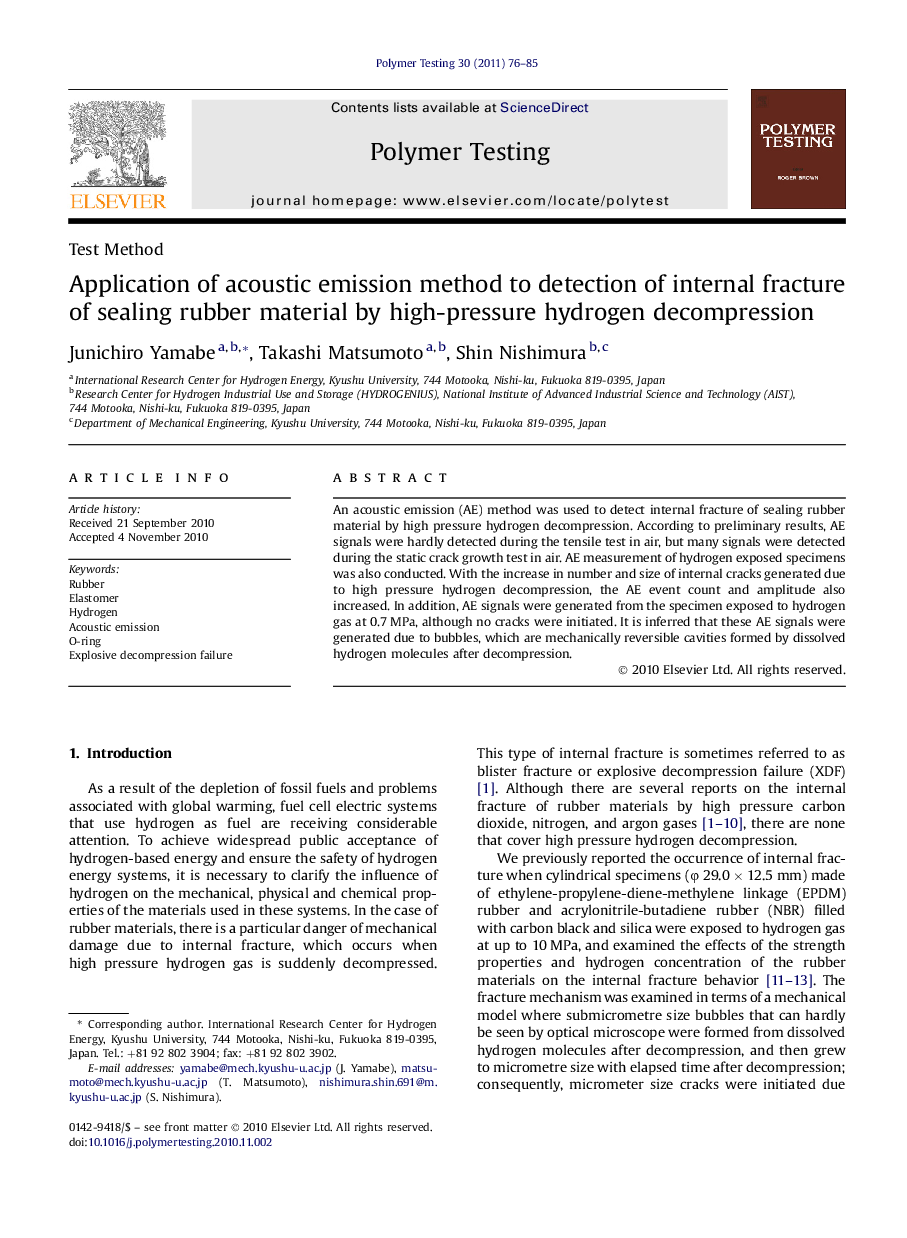| Article ID | Journal | Published Year | Pages | File Type |
|---|---|---|---|---|
| 5207117 | Polymer Testing | 2011 | 10 Pages |
Abstract
An acoustic emission (AE) method was used to detect internal fracture of sealing rubber material by high pressure hydrogen decompression. According to preliminary results, AE signals were hardly detected during the tensile test in air, but many signals were detected during the static crack growth test in air. AE measurement of hydrogen exposed specimens was also conducted. With the increase in number and size of internal cracks generated due to high pressure hydrogen decompression, the AE event count and amplitude also increased. In addition, AE signals were generated from the specimen exposed to hydrogen gas at 0.7Â MPa, although no cracks were initiated. It is inferred that these AE signals were generated due to bubbles, which are mechanically reversible cavities formed by dissolved hydrogen molecules after decompression.
Related Topics
Physical Sciences and Engineering
Chemistry
Organic Chemistry
Authors
Junichiro Yamabe, Takashi Matsumoto, Shin Nishimura,
